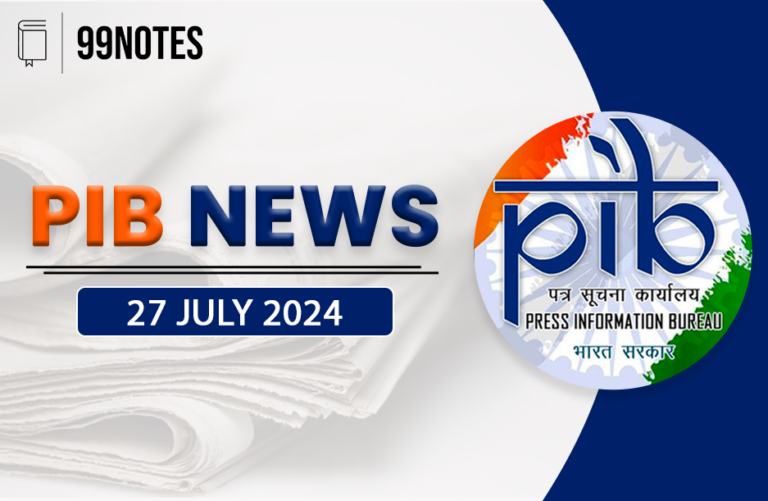14 December 2024 : Daily Current Affairs
1. Lok Sabha Passes Railways (Amendment) Bill, 2024 Amid Opposition Concerns Over Autonomy and Safety
- 1. Lok Sabha Passes Railways (Amendment) Bill, 2024 Amid Opposition Concerns Over Autonomy and Safety
- 2. Durgadi Fort Controversy
- 3. Steps taken by the Government to reduce Out-of-Pocket Health Expenditure
- 4. The knotty promise of Section 69
- Prelims Facts
- 1. Georgia’s political crisis deepens as govt. set to name far-right President
- 2. White House unveils national strategy to counter Islamophobia
- 3. LAUNCH OF FAME-III
(Source: Indian Express; Section: Economy; Page: 19)
| Topic: GS2 – Polity |
| Context: |
|
Analysis of News:
Rationale Behind the Bill
- The origins of the Railway Board date back to pre-Independence India when the railways operated under the Public Works Department.
- The Indian Railway Board Act, 1905, provided legal backing for the Board’s powers under the then Indian Railways Act, 1890.
- However, while the 1890 Act was replaced by the Railways Act, 1989, the Railway Board Act continued to exist separately.
- The government introduced the Bill to streamline governance by merging the provisions of the 1905 Act with the Railways Act, 1989, thereby eliminating redundancies.
- According to Union Minister Ashwini Vaishnaw, this consolidation aims to simplify legal frameworks and bolster railway efficiency and development.
Key Provisions of the Bill
Integration of Laws:
- Repeals the Indian Railway Board Act, 1905, and incorporates its provisions into the Railways Act, 1989.
- The Railway Board, already in existence, will operate under the amended 1989 Act, with no creation of new entities.
Authority of the Railway Board:
- Grants the Railway Board powers and functions previously vested in the Central Government under the Railways Act.
- Retains appointments of the Chairman and members of the Board under the amended framework.
Passenger Benefits:
- Aims to improve the Railway Board’s operational efficiency and network development.
Implications for Indian Railways
- While the Bill consolidates legal frameworks and clarifies the Railway Board’s governance, it has sparked broader debates on the future of Indian Railways.
- Critics argue that it fails to address pressing concerns like decentralization, safety reforms, and the establishment of an independent regulatory body.
- The centralization of power within the government has also raised fears of bureaucratic inertia and limited autonomy for operational decision-making.
- Supporters, on the other hand, believe the Bill is a foundational step towards modernizing the legal structure and improving operational efficiency. Its ultimate success will depend on how effectively the government implements the provisions and addresses stakeholder concerns.
Conclusion: A Step Forward Amidst Lingering Concerns
- The Railways (Amendment) Bill, 2024, marks a significant legislative move to streamline governance in Indian Railways.
- However, its passage has ignited debates on decentralization, safety, and inclusivity.
- As the government proceeds with implementation, addressing these concerns will be crucial to ensuring that the Indian Railways evolves into a more efficient, inclusive, and modern transport network.
| Potential Benefits |
|
Improved Governance: Streamlining the legal framework and clarifying the Railway Board’s role can lead to better governance and accountability. Enhanced Efficiency: Decentralization and autonomy for zones can result in faster project implementation, better resource utilization, and improved service delivery. Increased Investment: An independent regulator can create a more level playing field for private players, attracting investment in railway infrastructure. Regional Development: Provisions like those for extending the Arunachal Express demonstrate the potential for targeted infrastructure development in specific regions. |
| Practice Question: The Railways (Amendment) Bill, 2024, aims to streamline governance in Indian Railways by consolidating legal provisions. Critically analyze the key provisions of the Bill and discuss the concerns. (250 words/15 m) |
2. Durgadi Fort Controversy
(Source: Indian Express; Section: Explained; Page: 21)
| Topic: GS1 – History |
| Context: |
|
Analysis of News:
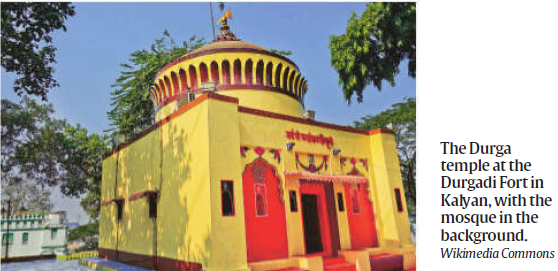
About Durgadi Fort:
- Durgadi Fort is located in Kalyan, Maharashtra, and dates back to the 16th century. It was originally built by the Adil Shahi Sultanate of Bijapur.
- The fort, spread over 70 acres, has both a mosque and a temple It was a key location for the Muslim community, especially for Eid prayers.
Changes Under the Marathas:
- In 1760, the Marathas took over Kalyan and renamed the fort as Durgadi Killa (fort of Goddess Durga). They built a temple to Goddess Durgadevi inside the fort, near the existing mosque.
- After the British took control in 1818, the fort became less significant as a place of worship, and the Durgadevi temple stopped being used by the public after 1876 when its idol was stolen.
The Dispute Over the Fort:
- 1960s: Tensions between the Hindu and Muslim communities began over the fort’s control. The Muslim community claimed to have been offering Eid prayers there for centuries, while Hindus wanted to worship and assert control over the site as well.
- 1966: The Maharashtra government tried to take control of the land, planning to turn part of it into a public park. This caused protests from the Muslim community. The government allowed Muslims to continue Eid prayers but said that neither Hindus nor Muslims could claim full control over the land.
- 2023: After nearly 50 years of legal battles, a Kalyan civil court ruled in favor of the Maharashtra government, affirming that the government owned the disputed land and rejecting the Muslim community’s claim.
- The court said that the Muslim community’s claim was barred by the statute of limitations, as the dispute had started in 1968, and the Muslim petition was filed in 1976—after the legal deadline for challenging the ownership had passed.
- However, the court did not rule on the historical claims about the religious significance of the structures in the fort. It only ruled that the land belonged to the Maharashtra government.
| Practice Question: Discuss the significance of timely legal action in ownership disputes over historical sites and analyze the role of the state in balancing heritage preservation with law and order maintenance amidst competing community claims. (250 words/15 m) |
3. Steps taken by the Government to reduce Out-of-Pocket Health Expenditure
(Source – https://pib.gov.in/PressReleseDetail.aspx?PRID=2084188®=3&lang=1 )
| Context |
|
Decline in Out-of-Pocket Expenditure (OOPE)
- The Out-of-Pocket Expenditure (OOPE) as a percentage of Total Health Expenditure (THE) has decreased from 48.8% in 2017-18 to 39.4% in 2021-22.
- The decline trend over the years: 48.2% in 2018-19, 47.1% in 2019-20, and 44.4% in 2020-21. This indicates progress in reducing personal health spending in India.
Increased Budget Allocation for Health
- The budget allocation for the Department of Health & Family Welfare has risen by 85% from 2017-18 (BE) to 2024-25 (BE).
- The 15th Finance Commission has allocated Rs. 70,051 crores as grants for health through local governments to enhance healthcare delivery.
Initiatives to Improve Healthcare Access
- The Ministry of Health and Family Welfare has urged states to prioritize healthcare funding with at least a 10% annual increase.
- The National Health Mission (NHM) supports state governments in providing accessible and affordable healthcare services, especially for underserved and marginalized groups, particularly in rural areas.
Key Mission Mode Projects
- Pradhan Mantri-Ayushman Bharat Health Infrastructure Mission (PM-ABHIM):
- This scheme aims to strengthen primary, secondary, and tertiary health systems, with an outlay of Rs. 64,180 crore.
- It focuses on developing national institutions and capacities to detect and treat emerging diseases.
- Ayushman Aarogya Mandir (AAM):
- As of December 2024, 1,75,418 AAMs have been set up by transforming Sub-Health Centres (SHCs) and Primary Health Centres (PHCs).
- AAMs aim to deliver comprehensive primary healthcare services, including preventive, promotive, curative, palliative, and rehabilitative care.
Ayushman Bharat-PM Jan Arogya Yojana (PM-JAY)
- PM-JAY offers Rs. 5 lakh health cover per family per year for secondary and tertiary care hospitalization to 55 crore beneficiaries.
- Recently, the scheme extended health coverage to senior citizens aged 70 and above, regardless of income.
Other Government Healthcare Initiatives
- The National Free Drugs Service and Free Diagnostic Service aim to provide essential drugs and diagnostic facilities to reduce OOPE.
- The Pradhan Mantri Bhartiya Janaushadhi Pariyojana (PMBJP) ensures the availability of affordable generic medicines, and AMRIT Pharmacy stores offer affordable medicines and implants in select hospitals.
| Practice Question: Discuss the initiatives undertaken by the Government of India to reduce Out-of-Pocket Expenditure in healthcare. How do schemes like Ayushman Bharat and PM-JAY contribute to improving healthcare access? (150 Words /10 marks) |
4. The knotty promise of Section 69
(Source – The Hindu, International Edition – Page No. – 10)
| Topic: GS2 – Indian Polity |
| Context |
|
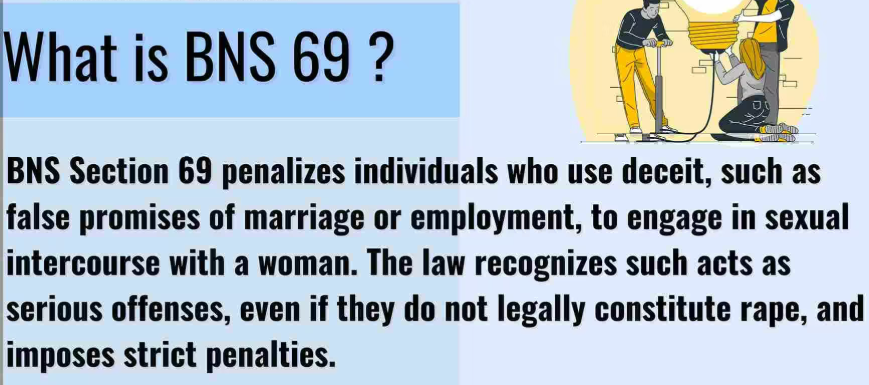
Background and Allegations
- A case was filed under Section 69 of the BNS by a 25-year-old woman from Jharkhand against a man for engaging in a sexual relationship under the pretense of marriage.
- Section 69 criminalizes sexual intercourse based on deceitful means, such as false promises of marriage, with penalties including imprisonment of up to 10 years and a fine.
Historical Context and Evolution of the Law
- Before the enactment of the BNS, similar cases were registered under Sections 376(2)(n) and 90 of the Indian Penal Code (IPC).
- These sections addressed rape through repeated sexual acts and consent obtained under false pretenses.
- The new law explicitly includes terms like “deceitful means” and “inducement” to address ambiguities in the IPC.
| Legal Challenges and Differing Judicial Opinions |
|
Statistical Insights
- National Crime Records Bureau (NCRB) data from 2016 to 2022 shows that up to 40% of rape allegations pertained to false promises of marriage or similar accusations.
- The average conviction rate for all rape cases during this period was 29.71%.
Parliamentary Report and Constitutional Concerns
- A parliamentary report on the BNS highlighted challenges in proving promises to marry, as intentions can change over time.
- The report cautioned against vague definitions that could lead to inconsistencies in enforcement.
- It also raised concerns about intrusions into individual privacy and autonomy.
Support for Section 69
- Proponents argue that Section 69 closes legal loopholes by explicitly addressing coercion through psychological or emotional manipulation.
- The law aims to protect women in patriarchal societies where marriage often defines their personhood.
Constitutional Challenge
- A public interest litigation has been filed, questioning the constitutional validity of Section 69.
- Concerns include its exclusion of the LGBTQ community, potential misuse in live-in relationships, and violation of individual rights under Article 21 of the Constitution.
- The High Court has sought a response from the government on this issue.
| Practice Question: Discuss the implications of Section 69 of the Bharatiya Nyaya Sanhita (BNS) on personal autonomy and gender equity. Analyze its potential impact on the legal framework addressing sexual offences and its compatibility with constitutional rights. (150 Words /10 marks) |
Prelims Facts
1. Georgia’s political crisis deepens as govt. set to name far-right President
(Source – The Hindu, International Edition – Page No. – 12)
| Context |
|
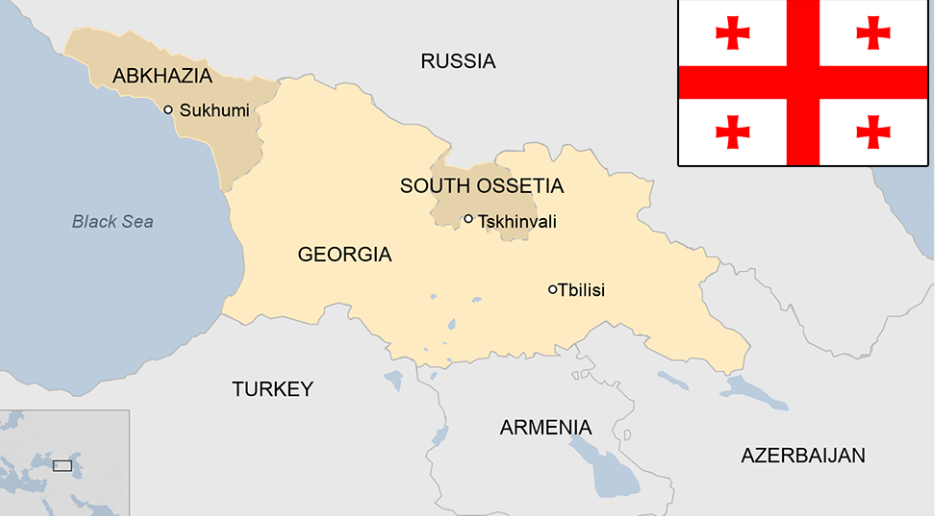
Analysis of the news:
- Georgia is experiencing a deepening political crisis with new pro-European protests ahead of a controversial presidential nomination by the ruling party.
- The country has been in turmoil since the governing party won a contested parliamentary election, delaying EU accession talks and sparking mass demonstrations.
- Protests are centered around alleged election rigging, democratic backsliding, and shifting policies closer to Russia, undermining EU membership aspirations.
- Opposition lawmakers have boycotted Parliament, and the pro-Western incumbent president refuses to step down, escalating constitutional tensions.
- The ruling party abolished direct presidential elections in 2017, fueling legitimacy concerns over the electoral process.
- Police crackdowns on protests have triggered domestic outrage and international condemnation, with reports of excessive force and human rights violations.
- The U.S. imposed sanctions on Georgian officials for undermining democracy.
| About Georgia |
|
2. White House unveils national strategy to counter Islamophobia
(Source – The Hindu, International Edition – Page No. – 13)
| Context |
|
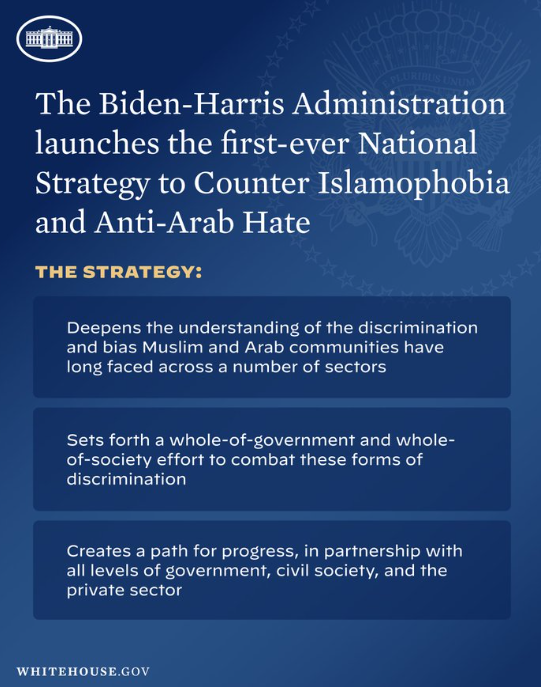
Analysis of the news:
The bulk of the actions in the plan have already been carried out.
The White House announced the first-ever national strategy to counter Islamophobia, addressing hate, violence, bias, and discrimination against Muslims and Arab Americans.
The plan follows a similar national strategy for combating antisemitism introduced by President Biden in May 2023.
The anti-Islamophobia strategy has been in development for months and is expected to be fully implemented before President Biden leaves office.
The strategy identifies four priorities: raising awareness of hate against Muslims and Arabs, improving their safety, accommodating religious practices, and promoting cross-community solidarity.
The Biden administration stated that threats against American Muslim and Arab communities have increased in recent years, making the strategy more urgent.
3. LAUNCH OF FAME-III
(Source – https://pib.gov.in/PressReleseDetail.aspx?PRID=2084141®=3&lang=1 )
| Context |
|
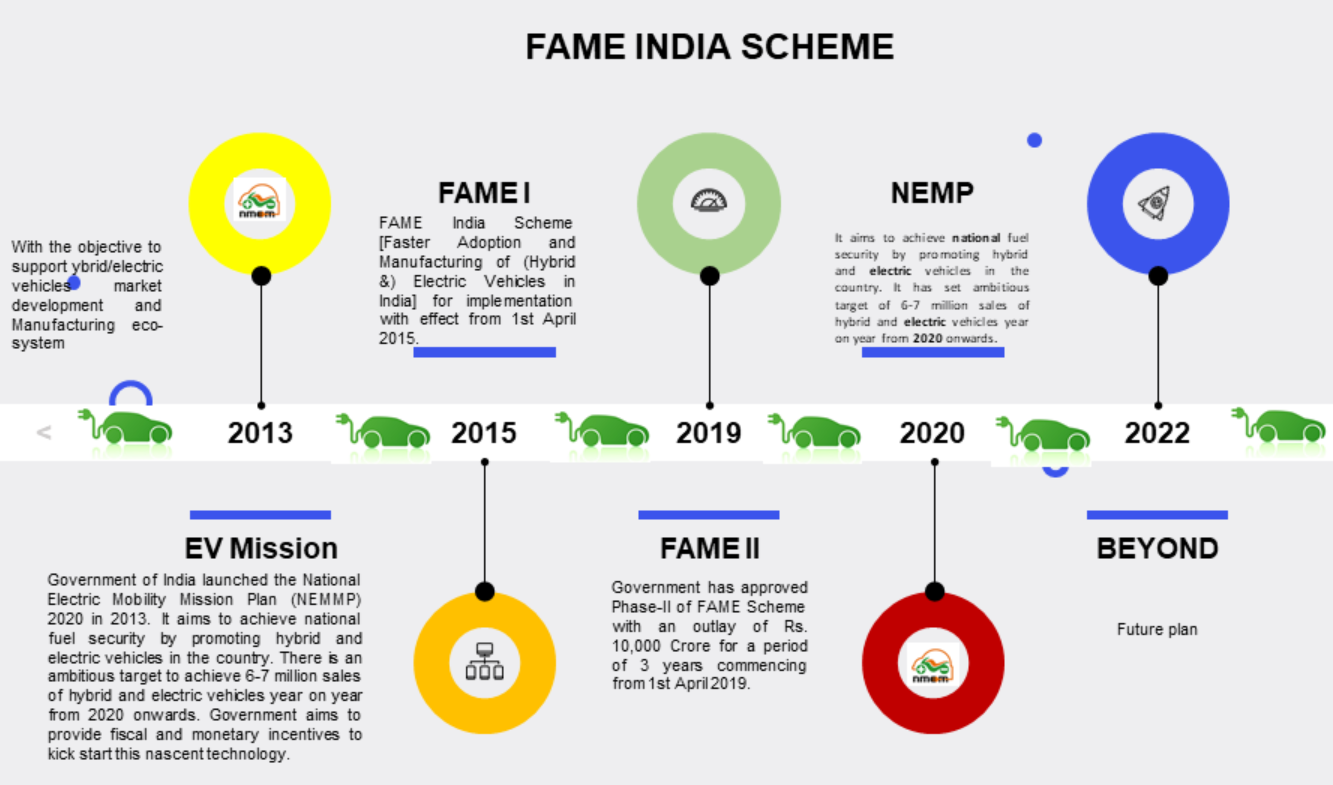
PM E-DRIVE Scheme:
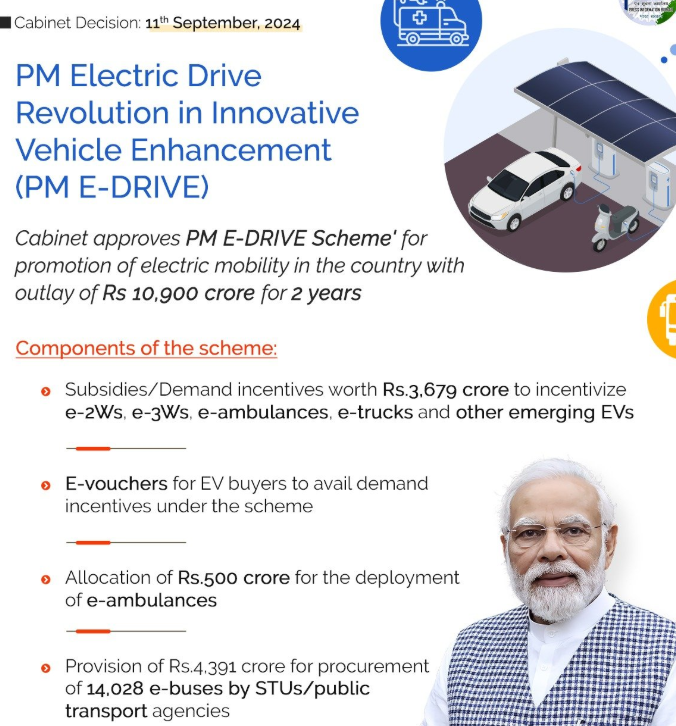
- Objective: Promote electric mobility in India, reduce reliance on fossil fuels, and improve air quality.
- Focus: Faster adoption of electric vehicles (EVs) through demand incentives, setting up charging infrastructure, and developing a robust EV manufacturing ecosystem.
- Outlay: ₹10,900 crore
- Duration: 1st October 2024 to 31st March 2026
- Incentives:
- Financial support for purchasing electric 2-wheelers (e-2W), 3-wheelers (e-3W), and buses.
- Subsidies for setting up public EV charging stations.
- Targets:
- Support around 25 lakh e-2Ws, 3 lakh e-3Ws, and 14,000 e-buses.
- Replaces: The earlier FAME II scheme.


